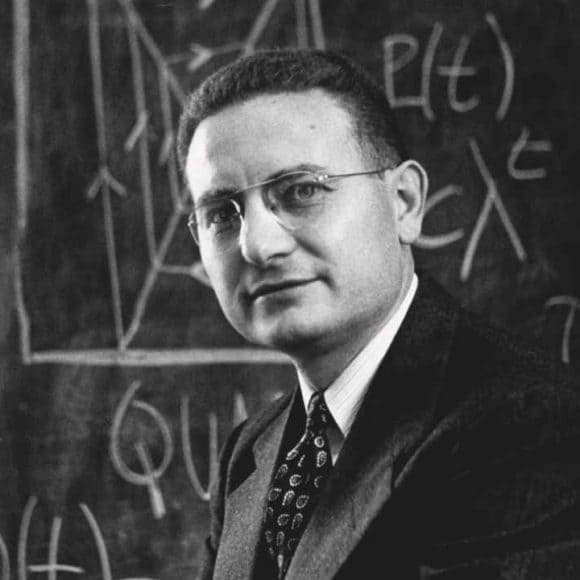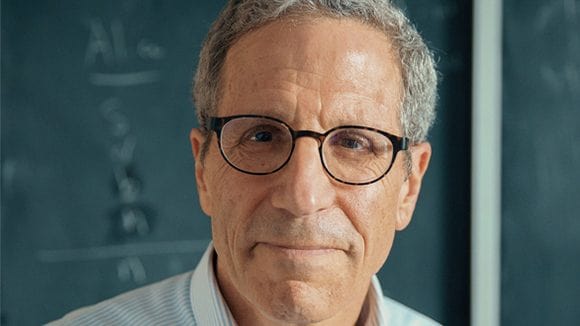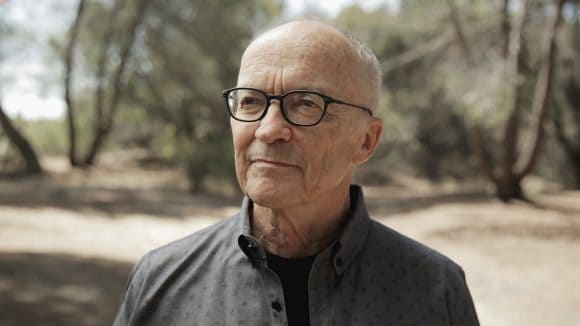Paul Samuelson
Nobel 1970 | Is economics a science?
Paul Samuelson started his studies in 1932, at the height of the Great Depression, when “economics was the most exciting thing in the world.” Already a well-known academic, he helped build the Economics Department at MIT into one of the world’s best. In his astonishingly rich career, he would not only become one of the last real generalists in his profession, he would act as a consultant to almost every important US institution and become the first American Nobel Prize winner in Economic Sciences.
Samuelson once famously said "I don’t care who writes a nation’s laws, if I can write its economics textbooks." By any measure, he did a great job. The first edition of Economics was published in 1948 and became the best-selling textbook for decades, with million copies sold and translated into more than 40 languages. In 2009, the nineteenth edition was published.

Paul Samuelson
Paul Samuelson
The Sveriges Riksbank Prize in Economic Sciences in Memory of Alfred Nobel, 1970
At a glance
Born: 1915, Gary, Indiana, USA
Died: 2009, Belmont, Massachusetts, USA
Field: Macroeconomics
Prize-winning work: Development of static and dynamic economic theory; contributed to raising the level of analysis in economic science
Most famous quote: I don’t care who writes a nation’s laws, if I can write its economics textbooks
Secret to a long life: Quit smoking in the 1970s (when all other professors were still chain smokers), continued to play tennis well into his 80s
Lifetime opponent (and friend): Milton Friedman, Anti-Keynesian and defender of free-market capitalism
Scandalous: Was on President Richard Nixon’s list of enemies (but didn’t care as it raised his reputation among his academic friends and with his children)
Do markets need government controls?
Do markets need government controls?
"I believe in my kind of economics," Samuelson said, adding how the theories that had preceded his work, written by his own teachers, had been imperfect. "During the Great Depression, they said that government should do nothing about it because they would only make things worse." Samuelson had a different belief. He felt he was not only a researcher but an educator too and wanted to introduce students to a different approach. This included the ideas of British economist John Maynard Keynes, who advocated that markets needed active government participation and controls.
Helping economics become a science
Has this question inspired you?
Has this question inspired you?
Get the latest Nobel perspectives delivered to you.
What was the Keynesian revolution that inspired economist Samuelson's love for economics?
What was the Keynesian revolution that inspired economist Samuelson's love for economics?
Samuelson remembered how on the morning of January 2, 1932, he was reborn after walking into an economics classroom at the University of Chicago for the first time. “I knew nothing about economics,” he said. “But it was love at first sight.” By chance, he was at the right place at the right time when the Keynesian revolution came. Samuelson described it as the dramatic and controversial event in the history of political economy in the 20th century.
"It’s exactly the way a physicist must have felt at the time of the quantum mechanics breakthrough, with Bohr and Heisenberg and Schrödinger,” he said. “Those on the scene, they had good luck. I’ve had all my life that kind of good luck."
In Chicago, he had the best education in pre-Keynesian economics. At Harvard, he studied under Schumpeter and Leontief. He absorbed everything he could and then, before even turning 30, started challenging the economic thinking of the day in his own way.
How did Paul Samuelson use mathematics to elevate economics to a science?
How did Paul Samuelson use mathematics to elevate economics to a science?
His PhD thesis was titled "The Foundations of Economic Analysis", an early indication that Samuelson was thinking big. In the following years, he insisted that mathematics was essential to the understanding of an economy, and he used his mathematical skills to establish complex economic theories. The Nobel Committee would later point to how Samuelson, more than any other economist, "helped to raise the general analytical and methodological level in economic science," basically by rewriting considerable parts of it. To put it simply, Paul Samuelson helped economics become a science.
The last real generalist
"I tried to formulate modern economic theory in a way that would be operationally testable," Samuelson explained. "I looked for theorems and propositions which could be refuted by the facts or could be found not consistent with the facts. You get a rather powerful set of hypotheses how to formulate policies to meet the problems that are going to arise in future situations."
How did Paul Samuelson become a versatile economist across multiple fields of research?
How did Paul Samuelson become a versatile economist across multiple fields of research?
Samuelson was the last generalist in an age of increasing specialization. His research covered international trade, econometrics, probability theory, financial economics, labor economics and more. If you wanted to focus on one topic, it would have to be research and teaching. "What I looked for was common scientific methods that were applicable, not just in one field, but in many fields," Samuelson said. "What was important in my mind was that this should not be pure abstract theory, untouched by any facts." His collaborator, and 1997 Nobel Prize co-laureate Robert Merton says, "Paul could have gotten six Nobel Prizes. He wrote, in every single field, a foundational work of economics.”
How did Paul Samuelson advise John F. Kennedy and impact the US economy?
How did Paul Samuelson advise John F. Kennedy and impact the US economy?
Throughout his very successful career, Samuelson explained economics to many, but most notably to John F. Kennedy. "My most important hour was when I was his economic adviser,” he said. “I’m happy to look back on the fact that before he was assassinated, we did get the country moving again economically. We did bring a recession to an end."
Samuelson, despite this position, decided against moving to Washington, but stayed a professor at MIT from 1940 until the end of his life. He once explained how he wanted to be an “advisor in the shadows" as to keep his independence. "I always found it necessary to have my roots in academia,” he said. “I’ve moved a whole distance of about 50 yards in the last 45 years.”
Why economists can’t always be right
Samuelson emphasized how mathematical modelling was able to raise clear questions allowing for rigorous analysis, but he didn’t pretend mathematics could provide all the answers. After all, he knew that science was as complicated as the economic world itself. "In economics, very rarely is there one unequivocal answer,” he said. “I wear on my shield very proudly that I am an economist who is eclectic and who compromises."
"Let’s not be too sure that there’s just one best way, our way, and that every other way is something which needs to be fought," he said. "As far as I’ve been able to learn, somewhere in that direction lies contempt and happiness, both at the personal and at society’s level. None of us in a dynamic world has arrived at the final word."
Does economics and politics go together?
Does economics and politics go together?
"To be a good economist, you must be a good political economist,” Samuelson said. “It’s not enough to know the diagrams of supply and demand and the mathematics of econometric regressions. You have to be able to understand social tensions and conflicts." Though he was aware of the fact that economic science could affect humanity’s wellbeing, he didn’t believe that the question of right or wrong could be answered by science.
"Whether a society is a better society, that’s a matter of judgement, it’s outside of science,” he said. “Each society must make that judgement. A scientist like me can translate how much will you have to pay in real growth of the total if you insist upon dividing the pieces of the pie more equally."
Has this question inspired you?
Has this question inspired you?
Get the latest Nobel perspectives delivered to you.
Samuelson's vision of a warmhearted yet efficient economics
Samuelson's vision of a warmhearted yet efficient economics
Samuelson dreamt of developing better tools of modern, mainstream economics and argued for a kind of economics that is warmhearted, but that doesn’t sacrifice more than it needs to in efficiency and progress. "As I grow older, I become more realistic about what’s really feasible," he explained. "Most of the economic activity can probably be done best if it’s left to the market. That’s the number one lesson of the age after Keynes. We don’t have to go through long capitalistic slumps. We are able to intervene in macroeconomics and let the market show its strength. If you give the market its powers, it will demonstrate that those powers are very effective."
"The task of post-Keynesian stabilization policy is the central bank should lean against the wind,” he continued. “If the economy is overheating, the central bank should be taking in the money supplies, should be raising interest rates in order to dampen down the inflationary pressure. If there is too little expenditure, the central bank should be leaning against the wind of deflation."
Samuelson argued against having a warm heart and a soft head. "Probably Robin Hood and his merry men kept a good deal of what they took from the rich, and it did not all get into the hands of the poor," he joked.
What did Paul Samuelson hope for in terms of his legacy?
What did Paul Samuelson hope for in terms of his legacy?
When Paul Samuelson died at the age of 94 in 2009, many wrote of how he had been the most important economist of the 20th century. While he was at the forefront of crucial economic changes, he once described it as having been pure fun. But he didn’t want the applause. "It’s true that I’ve accomplished a certain total of scientific work, but I don’t expect a pat on the back. I just enjoy doing it,” he said.
The immortality that I can hope for is the remembrance of the work that I’ve done.
Why do countries have to find better ways to grow?
Why do countries have to find better ways to grow?
Hear Michael Spence's view on how countries can grow sustainably while having a long-lasting positive impact.
So, what does Samuelson's work mean for us?
So, what does Samuelson's work mean for us?
"The veneration of mathematical economics that is Samuelson's legacy has damaged economics in financial markets. Samuelson's mathematical modelling is the brilliance of his work, but also its flaw"
Paul Donovan
Global Chief Economist
UBS Wealth Management
Has this question inspired you?
Has this question inspired you?
Get the latest Nobel Perspectives updates delivered to you.


